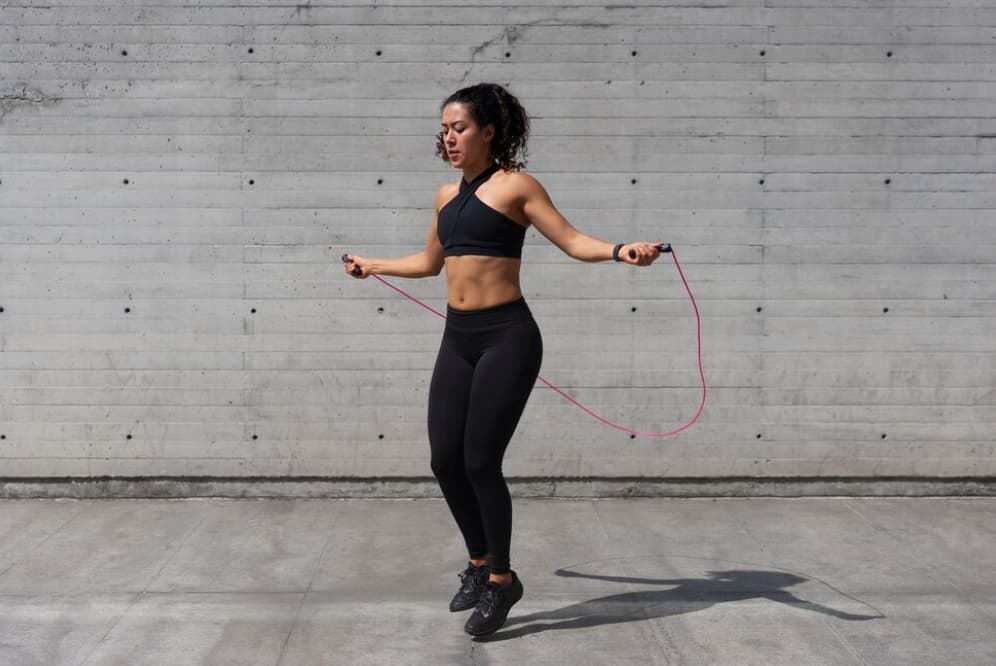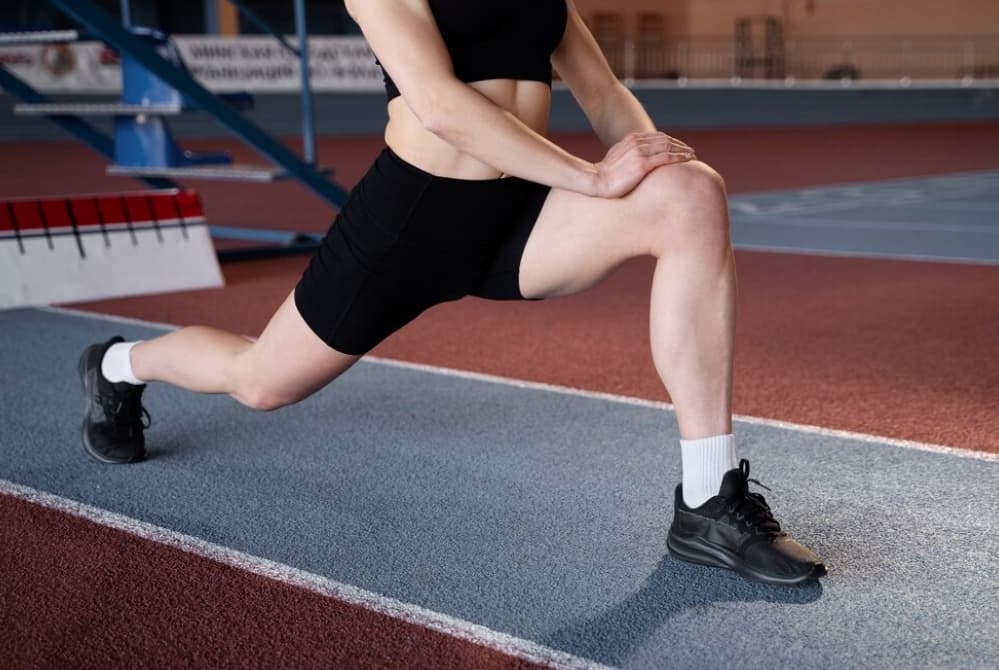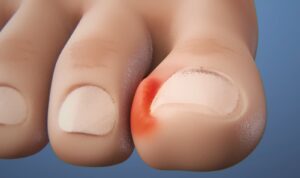Deciphering Achilles Tendinopathy vs. Tendonitis
The Achilles tendon, the most robust tendon in the human body, serves as a critical connector linking the calf muscles at the back of the lower leg to the heel bone. This vital tendon plays a pivotal role in enabling activities that involve standing on your toes, such as walking, running, or jumping, underscoring its significance in daily motion and athleticism.
While the terms Achilles tendinopathy and Achilles tendonitis are often used interchangeably in casual discussions, they refer to distinct conditions affecting the Achilles tendon. Achilles tendonitis is characterized by inflammation of the tendon, typically triggered by sports-related activities or other forms of physical exertion. In contrast, Achilles tendinopathy describes a broader spectrum of tendon issues, including degenerative changes that occur over time due to repetitive micro-traumas to the tendon. This condition can impact individuals regardless of their activity level or athletic involvement, making an understanding of its causes, prevention, and treatment essential for maintaining tendon health.
The presence of a lump on the Achilles tendon can sometimes indicate underlying foot stress fractures, as discussed in the article detailing top foot stress fracture symptoms and providing photos for clarity.
Types of Achilles Tendinopathy
Achilles tendinopathy manifests in distinct forms: mid-portion and insertional, determined by their respective locations. Mid-portion tendinopathy typically manifests with pain 2-6cm above the heel bone, while insertional tendinopathy involves pain at the Achilles tendon’s insertion point into the heel bone.
Accurate diagnosis is crucial, as exercises tailored for mid-portion tendinopathy may exacerbate symptoms if applied to an insertional condition erroneously.
The Origins and Contributing Factors of Achilles Tendinopathy
Achilles tendinopathy is often the result of progressive deterioration of the tendon, attributed to continuous strain or the natural aging process. This condition might present itself as an abrupt injury, but it typically evolves due to the tendon’s gradual weakening. This weakening can arise from repetitive motions associated with one’s occupational tasks, physical fitness regimen, or everyday activities.
Key contributing factors to the development of Achilles tendinopathy include:
- Repetitive strain or excessive training;
- Utilizing unsupportive footwear during physical activities or training sessions;
- Abrupt modifications in the intensity, duration, or frequency of training routines;
- Engaging in physical activities on hard or irregular terrain;
- Inadequate exercise or training methodologies;
- Restricted flexibility in the calf muscles due to insufficient stretching.
Identifying Individuals Prone to Achilles Tendinopathy

Achilles tendinopathy is a condition that spans across various demographics, impacting both those who lead active lifestyles and those who do not. Predominantly, it becomes a concern for individuals engaged in activities with a significant amount of running or sudden movements, such as tennis, netball, soccer, and long-distance running.
The condition does not discriminate between genders, though research indicates a higher prevalence in men, particularly those aged 30 and above.
Factors that may elevate the risk of developing Achilles tendinopathy include:
- Being male;
- Being over 30 years old;
- Having a higher-than-average body mass;
- Regular participation in running, jogging, or jumping activities;
- Existing chronic health conditions, such as diabetes or rheumatoid arthritis;
- Having lower muscle strength, particularly within the calf muscles;
- Using inadequate footwear during physical activities.
Common Signs and Symptoms of Achilles Tendinopathy
The manifestations of Achilles tendinopathy can differ among individuals, but there are several symptoms frequently associated with this condition:
- Morning stiffness: A common complaint is stiffness in the ankle’s back area upon waking. This stiffness typically diminishes after walking for a few minutes, although it may persist for a longer duration in some cases;
- Tenderness in the Achilles tendon: The tendon often feels very tender when touched or lightly squeezed. In cases of mid-portion Achilles tendinopathy, this may lead to a noticeable, tender lump located 2-4cm above the heel. For insertional Achilles tendinopathy, where the tendon attaches to the bone, a painful heel spur may develop;
- Pain in the Achilles tendon: The intensity and timing of pain can vary widely among individuals. Some may continue their activity with manageable pain, while others experience significant pain after periods of rest or severe pain that prevents exercise;
- Swelling or thickening of the tendon may be observed;
- Difficulty standing on tiptoes or performing plantar flexion against resistance: Plantar flexion, the action of pointing the foot away from the leg, is essential for activities like standing on tiptoes or pressing a car’s accelerator. Challenges in these movements indicate issues with the Achilles tendon’s functionality;
- Challenges in bearing weight normally on the affected side.
Self-Care Strategies for Managing Heel Pain
For those noticing discomfort in the heel area following physical activity, implementing effective self-care measures can be crucial for relief and recovery. Adhering to the POLICE principle offers a structured approach to managing symptoms associated with heel pain, particularly when related to the Achilles tendon.
- Protection: The initial step following an injury to the Achilles tendon involves resting the affected area to minimize further strain and discomfort. Utilizing support devices such as crutches can alleviate pressure, while NSAIDs may be employed to mitigate pain and inflammation;
- Optimal Loading: Engaging in physical activity is essential even in the aftermath of an injury. Starting with a period of rest, gradually introduce gentle exercises to facilitate healing and prevent the loss of muscle strength and flexibility. This approach aids in the tendon’s recovery by encouraging controlled movement within a safe range;
- Ice: Applying cold packs enveloped in a towel to the inflamed region for 15-20 minutes toward the day’s end can significantly ease pain and diminish swelling. This method helps in soothing the tendon and surrounding tissues;
- Compression: Alongside cooling the tendon, employing compression with bandages can assist in minimizing swelling. It’s important, however, to ensure that the bandage is not excessively tight, which could impede circulation;
- Elevation: Elevating the legs above heart level facilitates improved blood circulation back to the heart, contributing to reduced swelling. Achieving this can be as simple as resting your legs on a pillow while lying down, enhancing comfort and aiding recovery.
Stretching for Achilles Tendon Health and Flexibility

Tight calf muscles significantly contribute to the development of Achilles tendon complications. Beginning exercise routines with stiff calves can put excessive stress on the Achilles tendon. This stress, if surpassing the tendon’s resilience, can lead to deterioration over time. Recognizing the optimal moment for initiating stretching exercises is crucial in managing and preventing Achilles tendon problems.
Determining the Right Time for Stretching
The decision on when to start stretching exercises is pivotal for those with Achilles tendon concerns. Initiating stretches too soon or when pain levels are high could exacerbate the condition.
Guidelines for initiating stretching include:
- Avoid stretching exercises if experiencing pain levels above 3 on a scale of 10;
- If pain levels are 3 or below, begin with gentle stretching exercises, ensuring they do not cause discomfort.
Recommended Stretching Exercises
To mitigate tightness in the calves and alleviate stress on the Achilles tendon, the following stretches are advised:
- Wall Calf Stretch: Face a wall, positioning the leg to be stretched behind you, keeping it straight, and the front leg bent. Lean forward until a stretch is felt in the calf of the back leg. For the Gastrocnemius muscle stretch, keep the back leg straight;
- Soleus Stretch: Similar to the Wall Calf Stretch, but both the back and front legs should be bent. This targets the stretch to the lower calf area.
Each stretch should be held for 30 seconds, repeating three times per leg, ensuring no pain is experienced during the process.
Calf Foam Rolling Techniques
- Begin with gentle, long strokes using a foam roller from the top to the bottom of the calf to warm up the muscle;
- Once warmed up, focus on areas of tenderness, holding the pressure for 20 seconds before moving to the next tender spot. Enhance the effect by moving the ankle up and down while focusing on each tender spot.
Incorporating these stretching and foam rolling techniques into your routine can help maintain calf flexibility, reduce the risk of Achilles tendon issues, and support overall lower leg health.
Gradual Loading: The Key to Healing Foot and Leg Pain
When faced with foot or leg pain, many people instinctively retreat to the confines of their homes, avoiding activity in hopes of easing the discomfort. While rest certainly has its place, it’s time to dispel a common misconception: progressive loading is essential for tendon healing.
Think of it like a rubber band – if you stretch it beyond its limits, it snaps. Similarly, the Achilles tendon can tear if subjected to forces beyond its capacity. However, applying a gradual load can strengthen the tendon without causing harm.
The crucial concept here is progression.
If you’re in considerable pain and unable to engage in dynamic movements, start with isometric exercises. These exercises can be performed with one or both legs:
- Hold each for 45 seconds, repeating 5 times;
- Rest for 15-30 seconds between repetitions;
- Repeat this regimen 3-4 times daily.
For those able to handle dynamic loading with minimal discomfort, it’s time to introduce additional load:
Exercise Protocol:
- Seated Calf Raises: 3 sets of 10 reps;
- Double Leg Calf Raises: 3 sets of 10 reps;
- Single Leg Calf Raises (with weights): 3 sets of 10 reps.
Footwear Impact on Achilles Tendon Health
Have you ever noticed that your Achilles tendon feels worse after strolling in Dunlop Volleys or wearing ballet flats to work? Wondering why? The answer lies not only in the support of the shoe but also in its pitch.
The pitch, or heel drop, of a shoe refers to the height difference from the rearfoot to the forefoot. Both Dunlop Volleys and ballet flats share a common trait – they lack heel pitch. This absence can exacerbate discomfort in the tendon, particularly if your calf muscles are tight.
Changing your footwear can be an initial step in addressing this issue. Traditional running shoes typically feature a shoe pitch of 10-12mm, which can alleviate discomfort by reducing stress on the Achilles tendon through elevating the heel towards the calf muscles.
If you’re already wearing supportive running shoes, your podiatrist might suggest using heel lifts, either prefabricated or custom-made. Placed in the heel region, preferably under the insole, these lifts help counteract the adverse effects of tight calf muscles and Achilles tendons.
Managing Foot and Ankle Conditions
Understanding Achilles tendinopathy is the first step toward recovery, and we’ve aimed to provide valuable insights to aid in your journey toward better foot health. If symptoms persist, it’s important to remember that additional strategies are available to support your healing process.
Tailored Orthotic Solutions
Clinics specialize in the development of personalized orthotic solutions to address conditions like Achilles tendinopathy. These tailor-made insoles are crafted to fit seamlessly into both athletic and everyday footwear, offering enhanced pressure distribution and biomechanical correction. This not only aids in pain relief but also promotes optimal foot function.
Advanced In-Shoe Pressure Diagnostics
Utilizing the state-of-the-art Parotec pressure analysis system, we’re able to precisely measure foot pressures during various activities. This technology assists in demonstrating the effectiveness of treatment interventions, ensuring that each patient receives care that is both accurate and tailored to their specific needs.
Alternative Therapies: Dry Needling and Foot Mobilization Techniques (FMT)
For those who find minimal relief from stretching exercises, clinics provide alternative therapies such as dry needling and FMT. These techniques are designed to quickly enhance the range of motion in the ankle, offering a pathway to improved mobility and comfort.
Radial Shockwave Therapy (ESWT)
In cases of persistent Achilles tendinopathy, radial shockwave therapy presents a powerful treatment option. This method utilizes radial shockwaves to stimulate blood flow and new blood vessel formation within the affected tissue, fostering an environment conducive to healing.
Strategies for Minimizing Achilles Tendinopathy Risk
While complete prevention of Achilles tendinopathy may not always be feasible, there are several proactive steps you can take to lower your susceptibility to this condition.
- Load Management: Incrementally escalate the distance, speed, and intensity of your physical activities to avoid overloading the Achilles tendon;
- Strengthening: Engage in progressive loading exercises to fortify the muscles around the Achilles tendon, thus reducing the likelihood of injury;
- Stretching: Prioritize daily stretching routines, especially before and after exercise sessions, to maintain flexibility in the calf muscles and prevent tightness;
- Footwear Selection: Opt for supportive footwear whenever possible to provide adequate cushioning and stability for your feet and ankles.
FAQs
For optimal recovery, we advocate a regimen that includes wall calf stretching, using a foam roller on the calves, and seated calf raises. Progressing to both double leg and single leg calf raises with added weights may further enhance tendon healing. If you don’t notice improvement, we recommend a personalized consultation with our expert podiatrists in Brisbane to devise a specialized treatment plan.
The healing process for tendons is gradual, with a full recovery potentially taking up to 12 weeks.
Halting all walking isn’t necessary. However, it’s advisable to limit physical activity to minimize stress on the Achilles tendon. Specifically, avoid walking on inclined surfaces which could exacerbate the condition.
Conclusion
Achilles tendinopathy can impact an individual’s daily life significantly. However, with the right knowledge of its causes, symptoms, self-care, treatment options, and preventative measures, managing the condition becomes a less daunting task.
Understanding the importance of stretching, progressive loading, proper footwear, diet, and physical therapy can significantly help manage and prevent Achilles tendinopathy. As always, it’s crucial to consult with health professionals before embarking on any self-care or treatment plan to ensure it aligns with your individual needs and condition.


